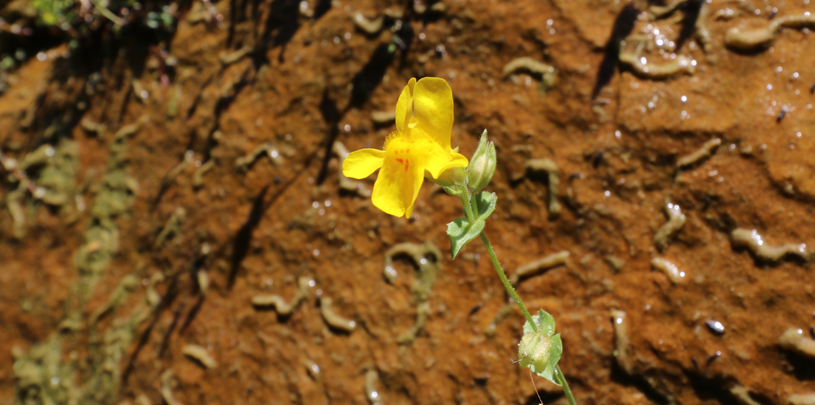
 by Marc Coles-Ritchie, Utah Forests Associate
by Marc Coles-Ritchie, Utah Forests Associate
Utah's Grand Staircase-Escalante National Monument might appear dry, but look a little closer and you'll find there are over 200 springs within the original monument boundaries. These precious watering holes are hotspots of cultural and biological diversity that nurture hanging gardens, quench the thirst of birds, mountain lions, black bears, and other animals, and hold special cultural significance for the region's Native peoples. A recent study found an average of 8.2 archaeological sites within just one mile of springs in the monument and documented an average of 540 cultural uses for plants at spring sites, according to the region's Native peoples.

Springs and the life-giving water they provide are essential to supporting the monument's plants and animals. Although parts of the monument average fewer than 10 inches of precipitation per year, Grand Staircase is home to over 900 plant species. One study documented at least 660 species of bees.

The Trump administration is rushing to develop plans for how to manage the monument he slashed by 47 percent last year, but these plans overlook springs. Many of Grand Staircase's springs are piped for human or livestock uses, and are vulnerable to being sucked dry, trampled, or fouled by the cattle that currently graze 96 percent of the monument. That number would jump to 98 percent under the administration's preferred plan. Add climate change to the mix, and many of these springs may be in danger of drying up, leaving the plants and animals that depend of them without water.
Protecting springs in Grand Staircase might seem like a no-brainer, but in the draft management plans for the Trump-shrunken Grand Staircase-Escalante National Monument and for the lands President Trump excised, the Bureau of Land Management fails to consider the current conditions of springs, their future in the face of climate change and human activities, or how to protect them from being dried up, overgrazed, trampled, and fouled by cattle.

Please urge the Bureau of Land Management to conduct a comprehensive review of the conditions of springs within the original monument boundaries given rising temperatures, increasing drought conditions, and increasing human demands on water.
Need more information to craft your comment? Here's a breakdown of the draft management plans for Grand Staircase ›
A small victory in the legal case challenging Daneros uranium mine, near Bears Ears National Monument.
Read MoreBears Ears petroglyph panels and cultural sites protected by new proposed management plan.
Read MoreFind out how the Bureau of Land Management is planning to protect old-growth forests, creeks, canyons, fossils, and more in Grand Staircase-Escalante National Monument.
Read More